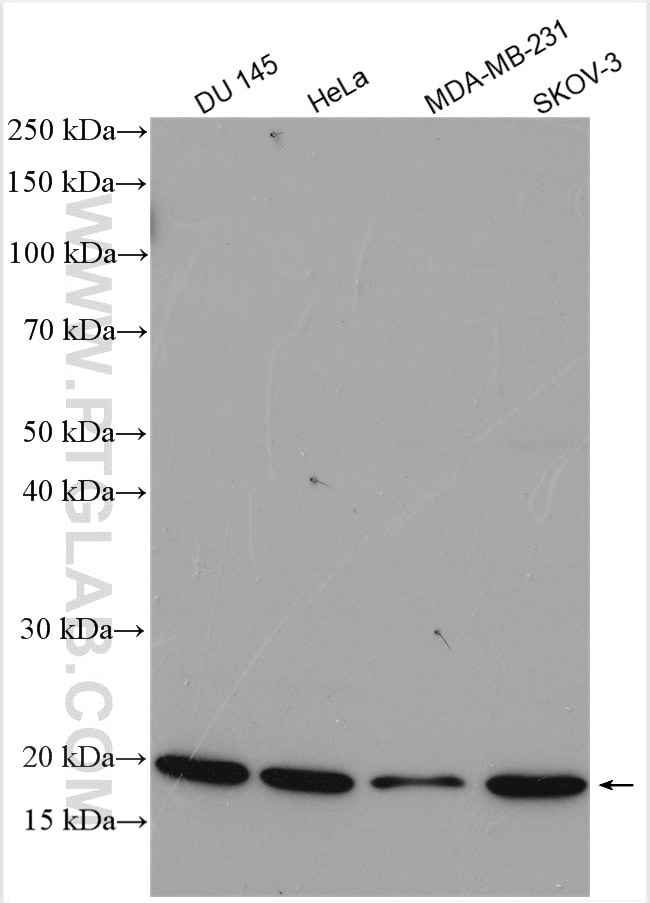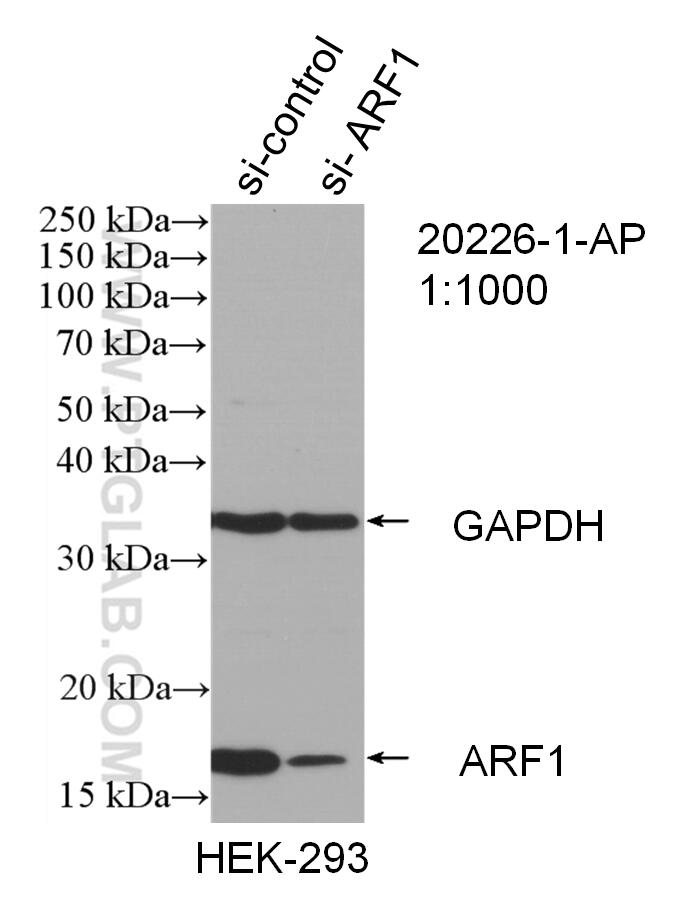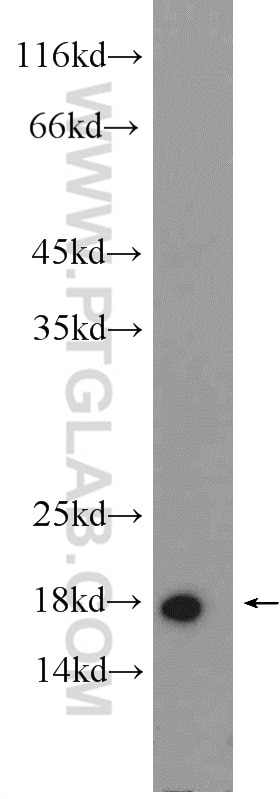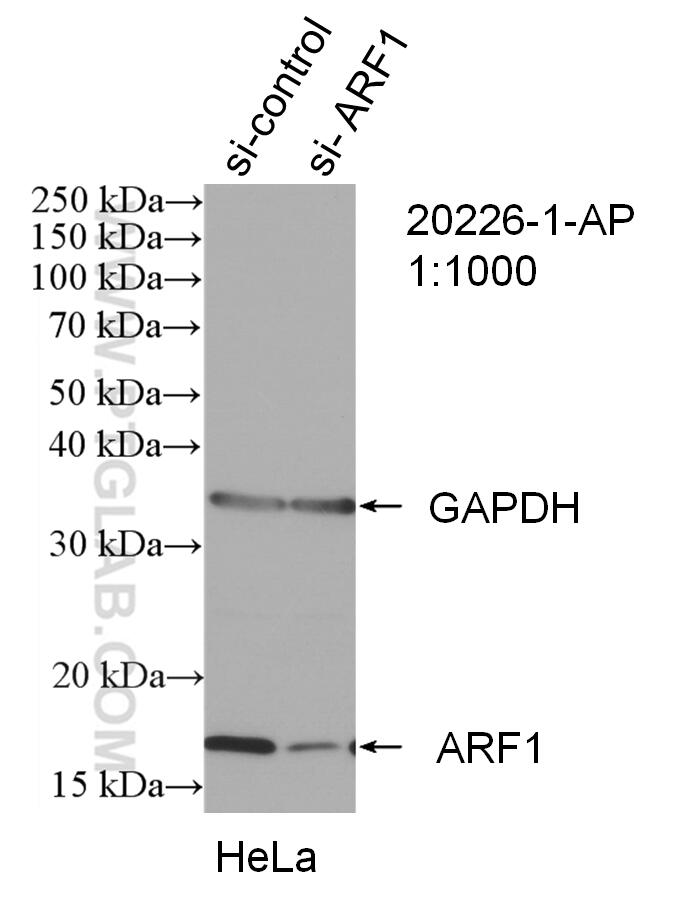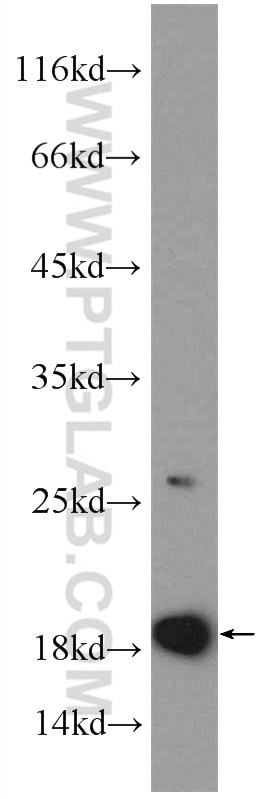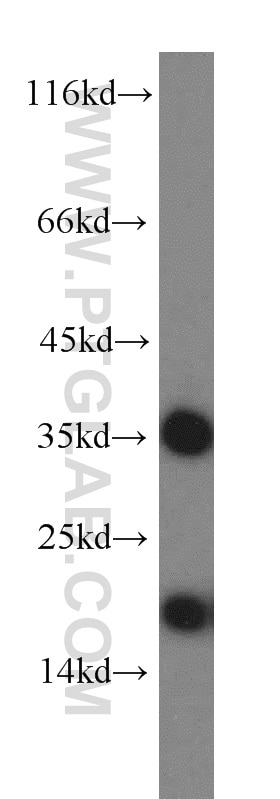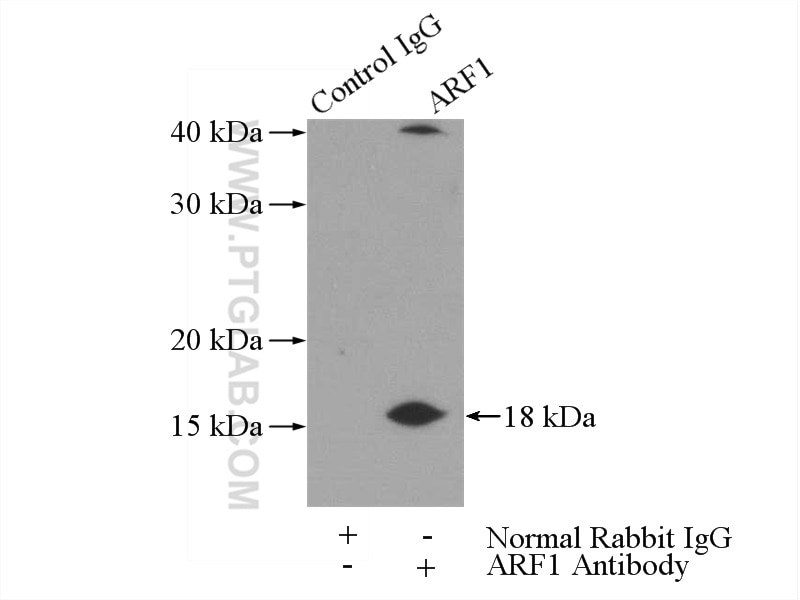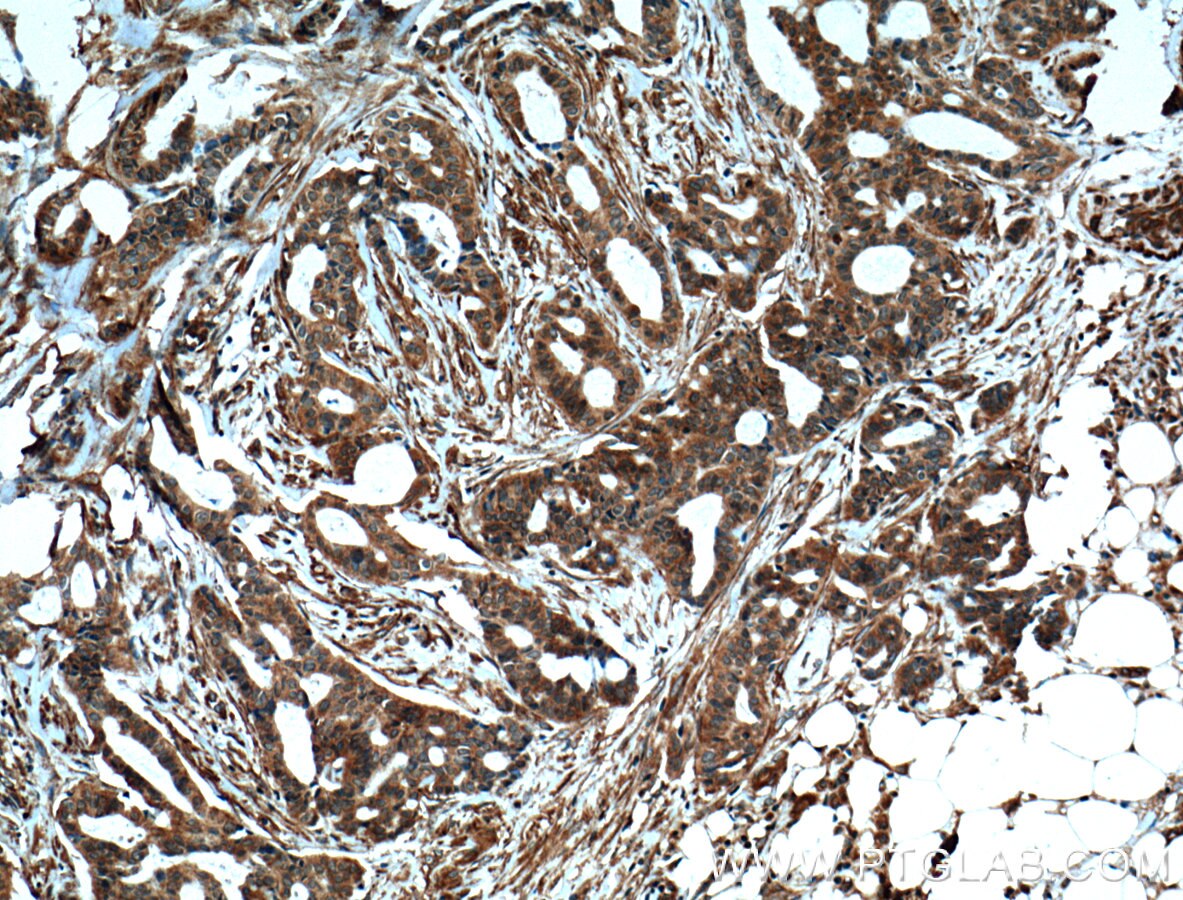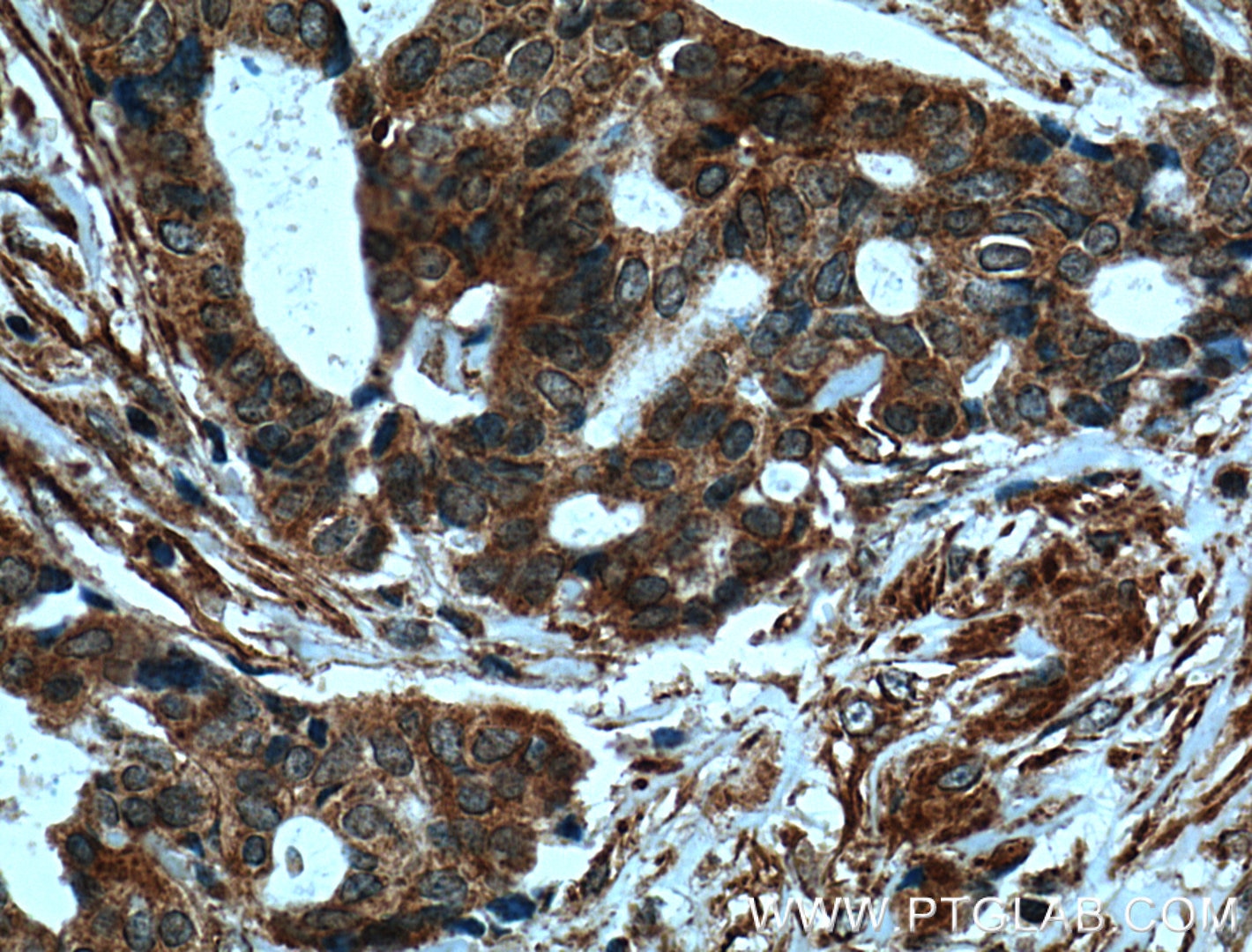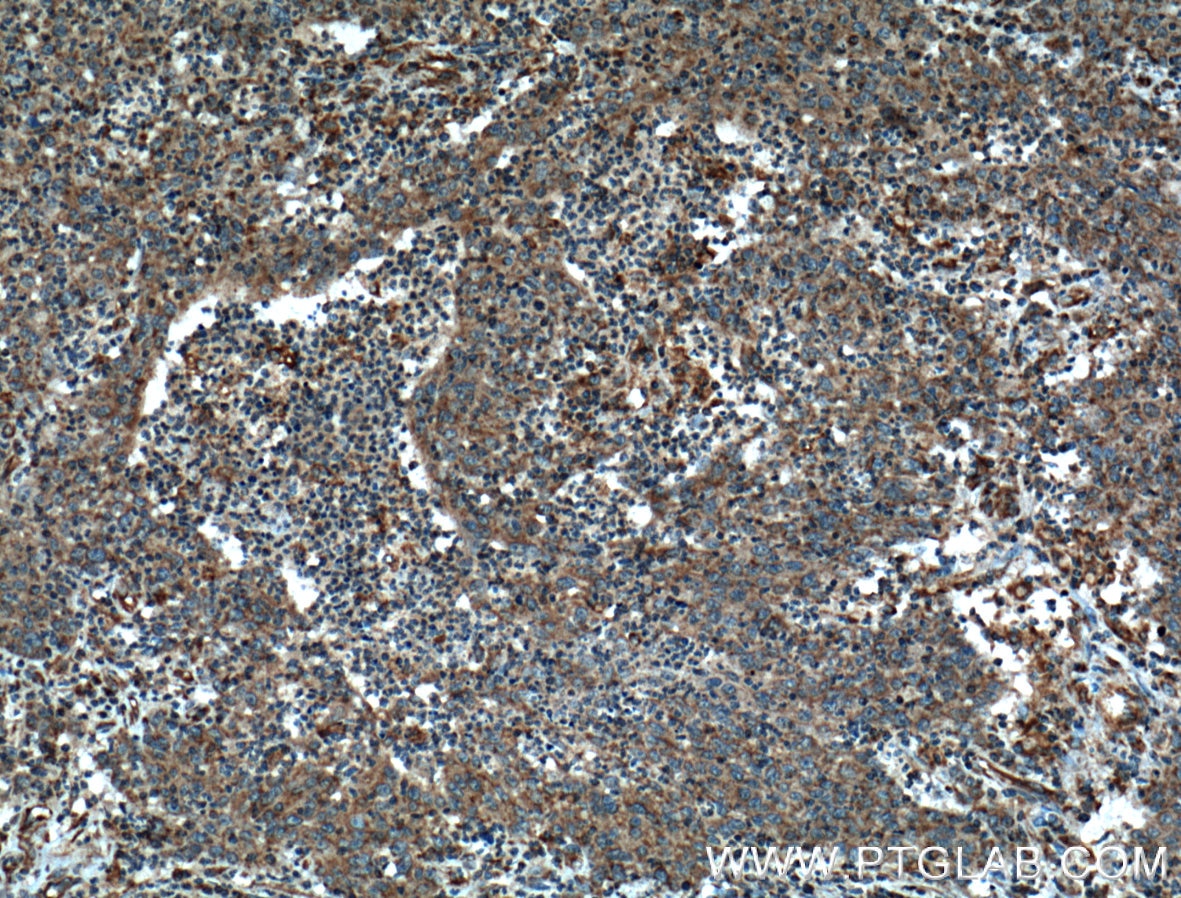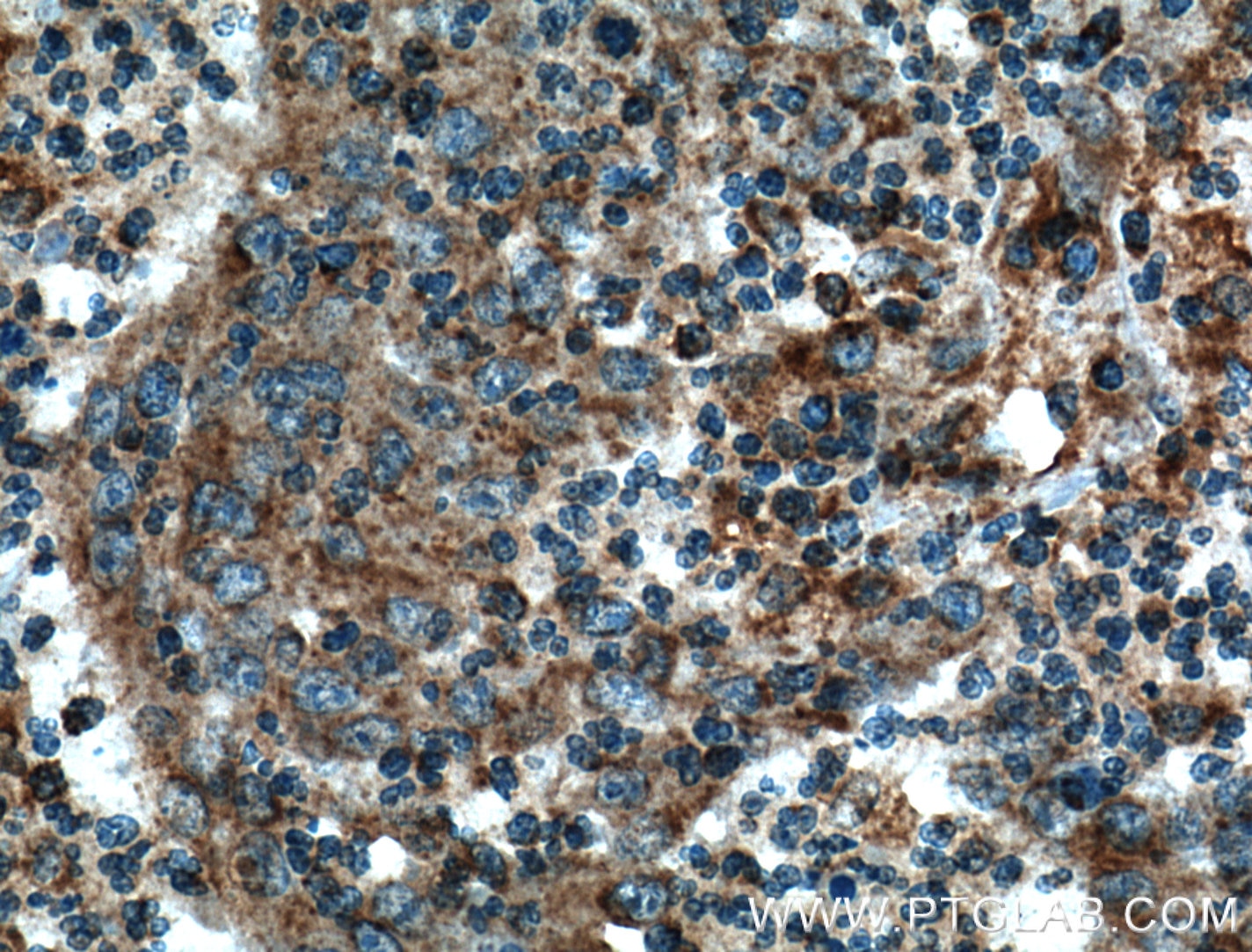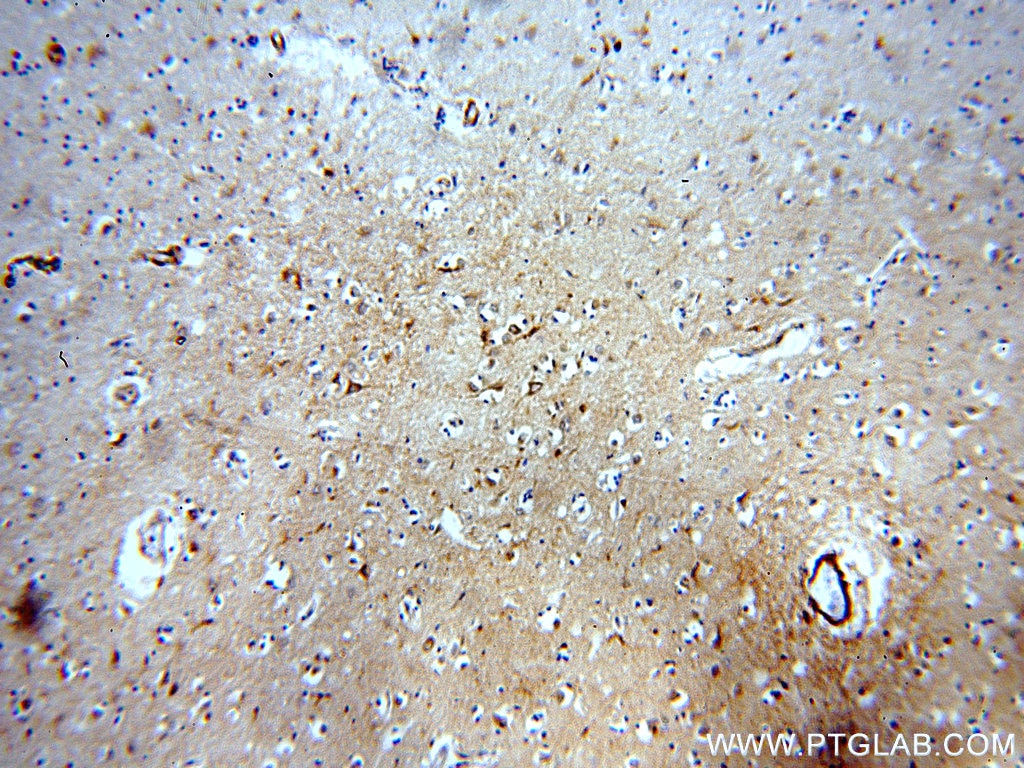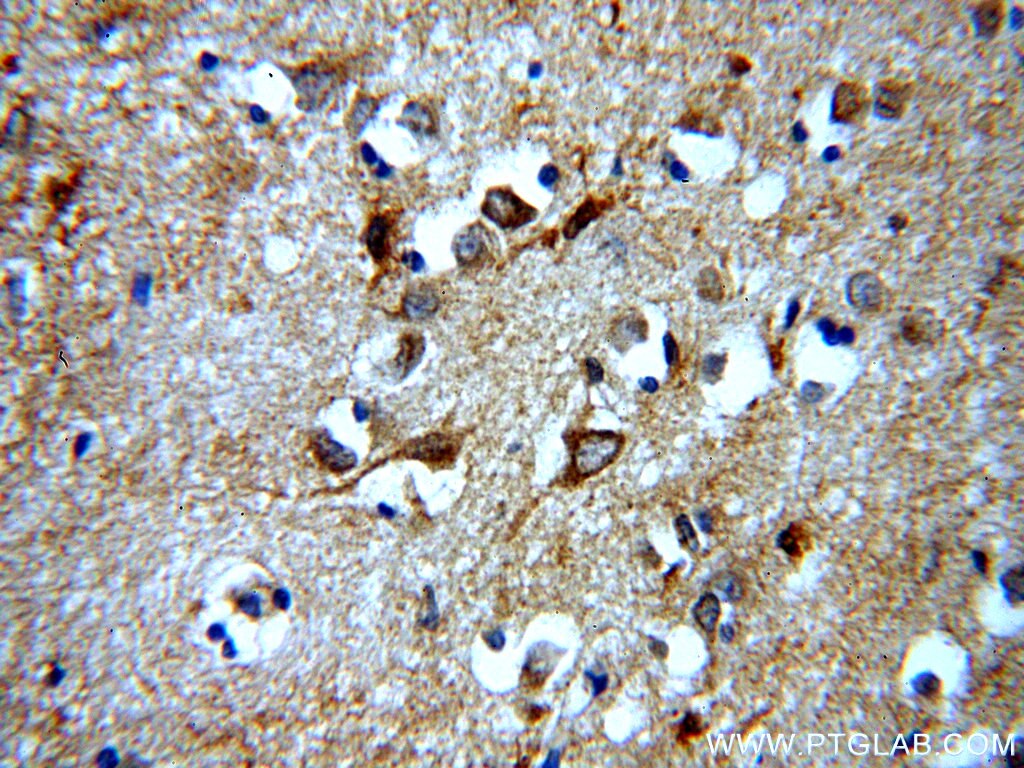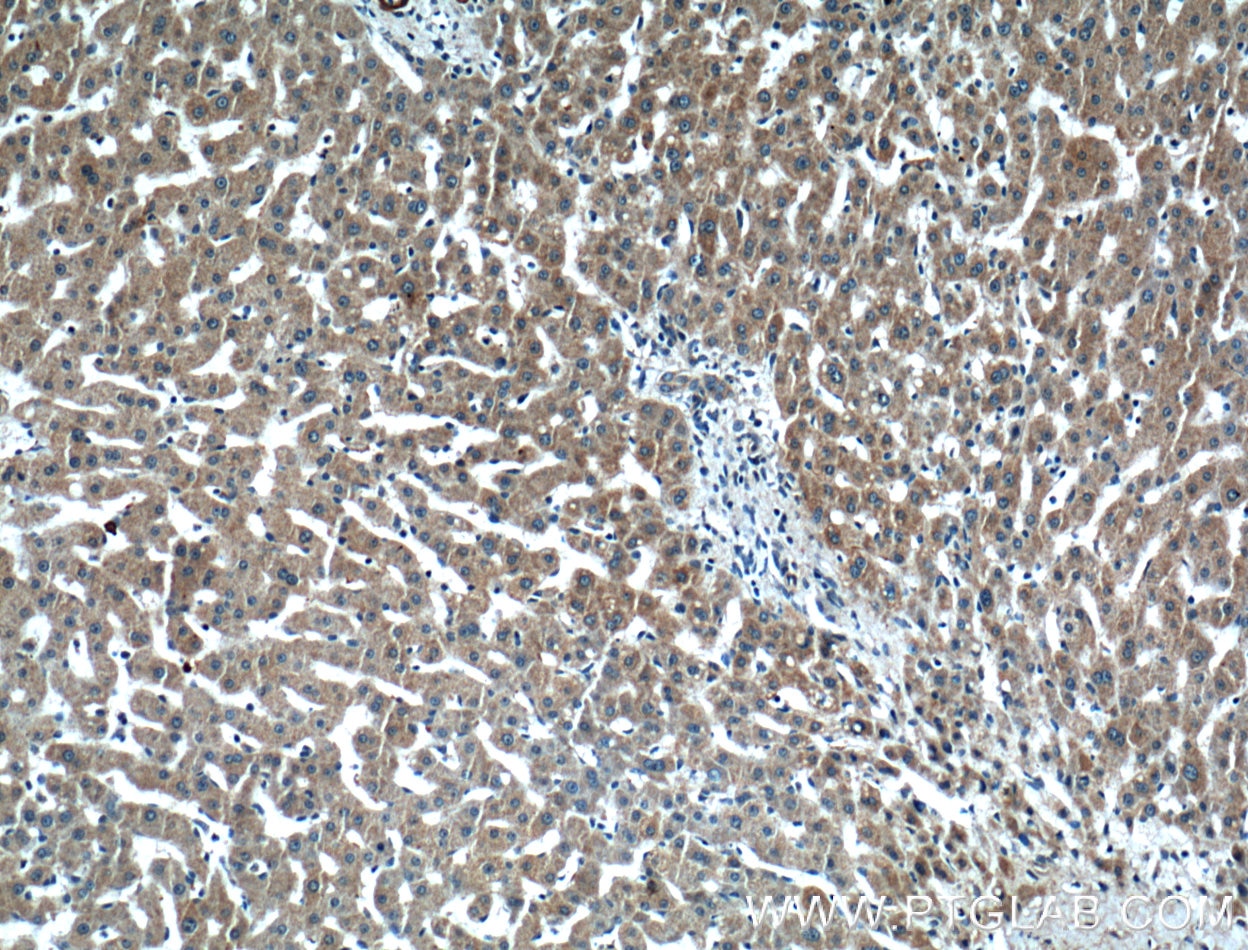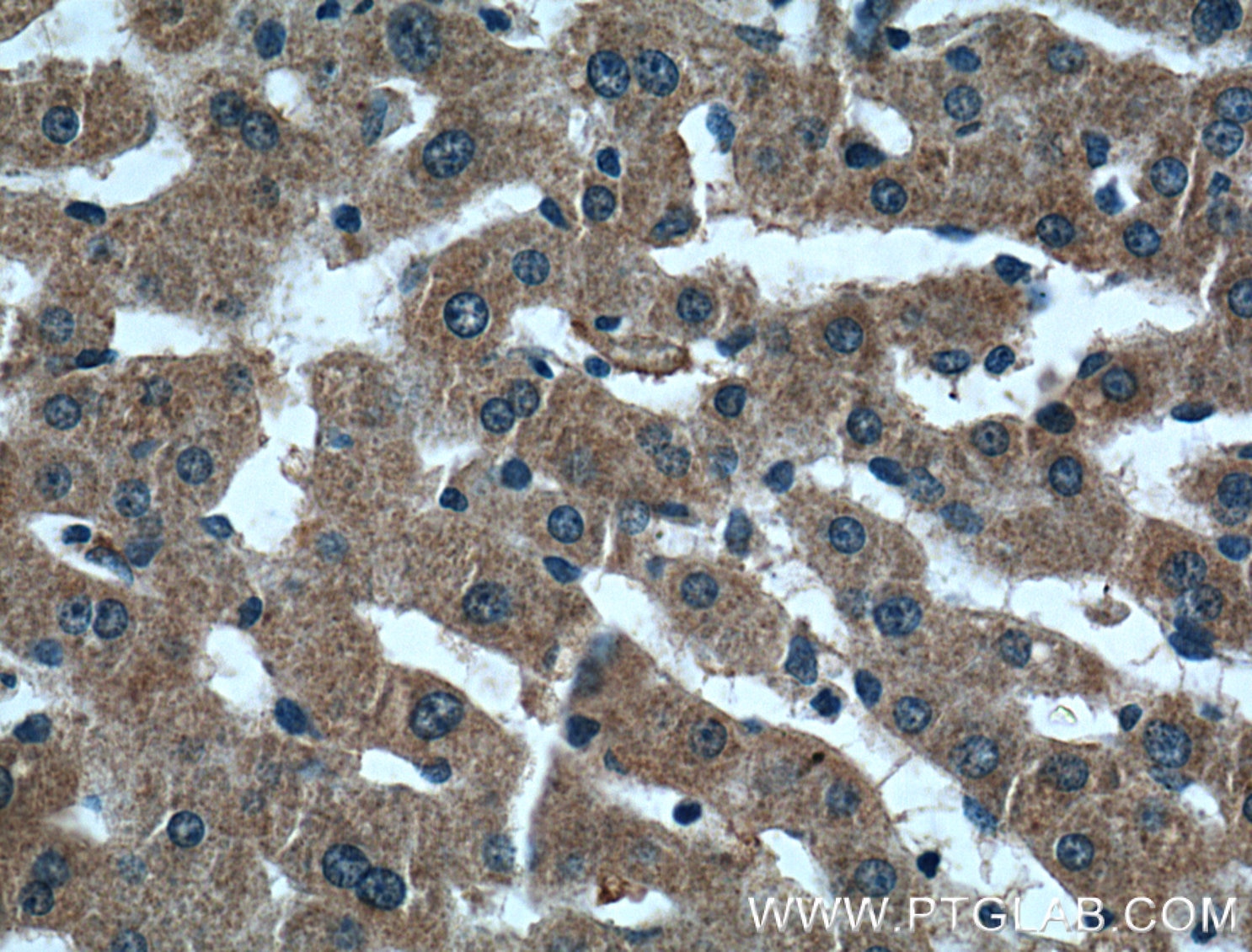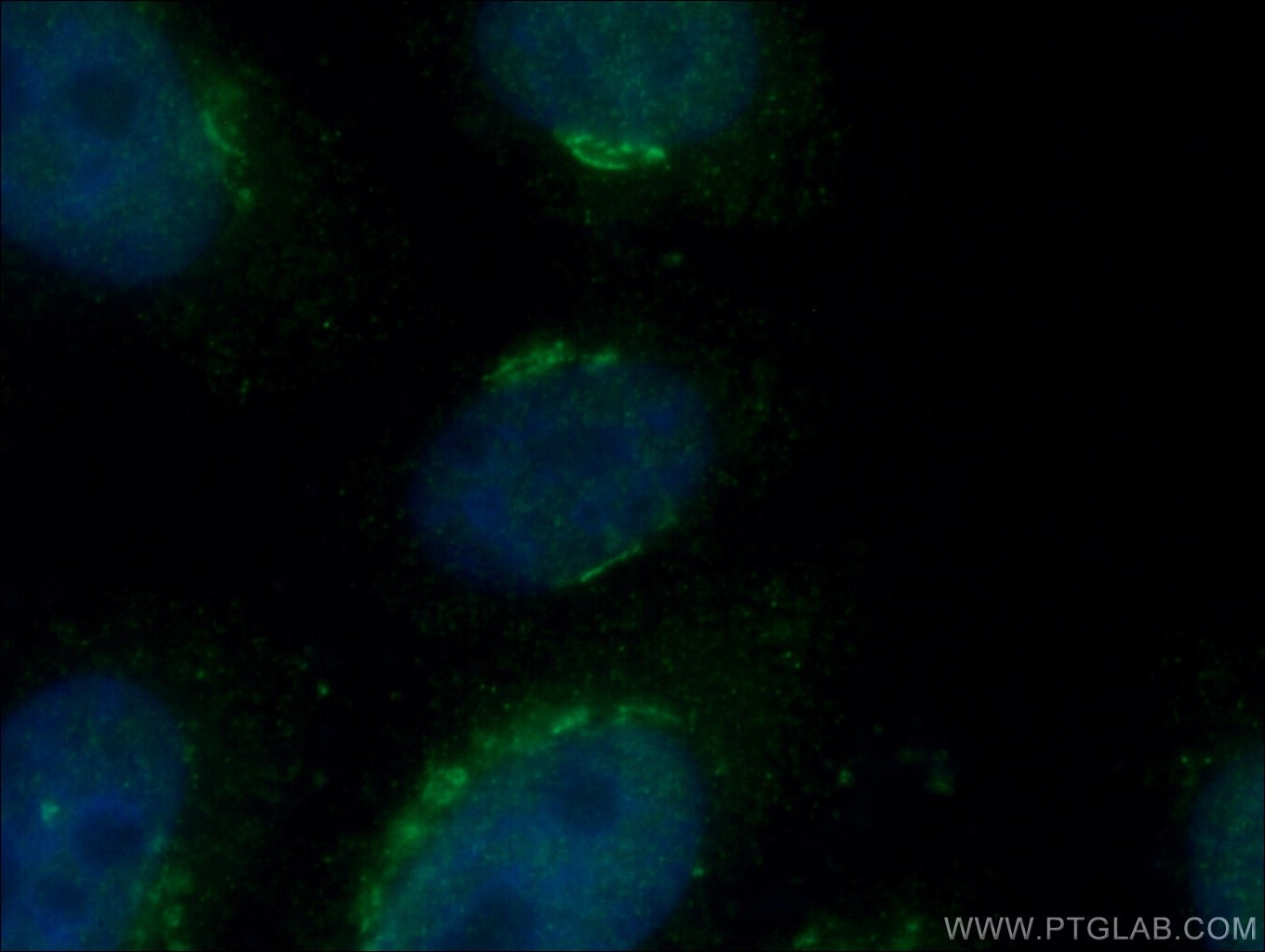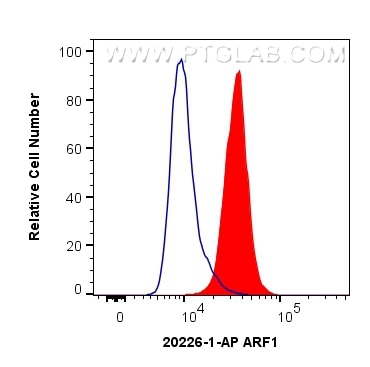- Phare
- Validé par KD/KO
Anticorps Polyclonal de lapin anti-ARF1
ARF1 Polyclonal Antibody for WB, IHC, IF/ICC, FC (Intra), IP, ELISA
Hôte / Isotype
Lapin / IgG
Réactivité testée
Humain, souris
Applications
WB, IHC, IF/ICC, FC (Intra), IP, CoIP, ELISA
Conjugaison
Non conjugué
N° de cat : 20226-1-AP
Synonymes
Galerie de données de validation
Applications testées
| Résultats positifs en WB | cellules DU 145, cellules HEK-293, cellules HeLa, cellules HepG2, cellules SKOV-3, tissu cérébral de souris |
| Résultats positifs en IP | cellules HeLa |
| Résultats positifs en IHC | tissu de cancer du sein humain, tissu cérébral humain, tissu de cancer du côlon humain, tissu hépatique humain il est suggéré de démasquer l'antigène avec un tampon de TE buffer pH 9.0; (*) À défaut, 'le démasquage de l'antigène peut être 'effectué avec un tampon citrate pH 6,0. |
| Résultats positifs en IF/ICC | cellules HepG2, |
| Résultats positifs en FC (Intra) | cellules HeLa, |
Dilution recommandée
| Application | Dilution |
|---|---|
| Western Blot (WB) | WB : 1:1000-1:4000 |
| Immunoprécipitation (IP) | IP : 0.5-4.0 ug for 1.0-3.0 mg of total protein lysate |
| Immunohistochimie (IHC) | IHC : 1:50-1:500 |
| Immunofluorescence (IF)/ICC | IF/ICC : 1:50-1:500 |
| Flow Cytometry (FC) (INTRA) | FC (INTRA) : 0.40 ug per 10^6 cells in a 100 µl suspension |
| It is recommended that this reagent should be titrated in each testing system to obtain optimal results. | |
| Sample-dependent, check data in validation data gallery | |
Applications publiées
| KD/KO | See 1 publications below |
| WB | See 7 publications below |
| IF | See 2 publications below |
| CoIP | See 1 publications below |
Informations sur le produit
20226-1-AP cible ARF1 dans les applications de WB, IHC, IF/ICC, FC (Intra), IP, CoIP, ELISA et montre une réactivité avec des échantillons Humain, souris
| Réactivité | Humain, souris |
| Réactivité citée | Humain, souris |
| Hôte / Isotype | Lapin / IgG |
| Clonalité | Polyclonal |
| Type | Anticorps |
| Immunogène | Peptide |
| Nom complet | ADP-ribosylation factor 1 |
| Masse moléculaire calculée | 21 kDa |
| Poids moléculaire observé | 18-21 kDa |
| Numéro d’acquisition GenBank | NM_001658 |
| Symbole du gène | ARF1 |
| Identification du gène (NCBI) | 375 |
| Conjugaison | Non conjugué |
| Forme | Liquide |
| Méthode de purification | Purification par affinité contre l'antigène |
| Tampon de stockage | PBS avec azoture de sodium à 0,02 % et glycérol à 50 % pH 7,3 |
| Conditions de stockage | Stocker à -20°C. Stable pendant un an après l'expédition. L'aliquotage n'est pas nécessaire pour le stockage à -20oC Les 20ul contiennent 0,1% de BSA. |
Informations générales
ADP-ribosylation factors (ARFs) are members of the ARF family of GTP-binding proteins of the Ras superfamily, with 20kda protein size. ARFs bind and regulate GTP/GDP cycle by alternating between the active GTP-bound and inactive GDP-bound conformations. ARF family proteins are essential and ubiquitous in eukaryotes. Six highly conserved members of the family have been identified in mammalian cells. They function in vesicular traffic and actin remodelling and other bioprocesses in cells. The ARF1 protein is localized to the Golgi apparatus and has a central role in intra-Golgi transport. It mainly functions in coat recruitment.(PMID: 7759471, PMID: 16042562). The antibody is specific to ARF1.
Protocole
| Product Specific Protocols | |
|---|---|
| WB protocol for ARF1 antibody 20226-1-AP | Download protocol |
| IHC protocol for ARF1 antibody 20226-1-AP | Download protocol |
| IF protocol for ARF1 antibody 20226-1-AP | Download protocol |
| IP protocol for ARF1 antibody 20226-1-AP | Download protocol |
| Standard Protocols | |
|---|---|
| Click here to view our Standard Protocols |
Publications
| Species | Application | Title |
|---|---|---|
Nat Immunol Essential role for GABARAP autophagy proteins in interferon-inducible GTPase-mediated host defense. | ||
Nat Commun Myristic acid as a checkpoint to regulate STING-dependent autophagy and interferon responses by promoting N-myristoylation | ||
Nat Commun ARF1 prevents aberrant type I interferon induction by regulating STING activation and recycling | ||
PLoS Pathog Enterovirus 71 protease 2Apro and 3Cpro differentially inhibit the cellular endoplasmic reticulum-associated degradation (ERAD) pathway via distinct mechanisms, and enterovirus 71 hijacks ERAD component p97 to promote its replication. | ||
J Cell Sci The protein kinase D1-mediated classical protein secretory pathway regulates the Ras oncogene-induced senescence response. | ||
Avis
The reviews below have been submitted by verified Proteintech customers who received an incentive forproviding their feedback.
FH Cristian (Verified Customer) (04-26-2019) | Immunofluorescent analysis of (PFA 3%) fixed HeLa cells using 20226-1-AP (ARF1 antibody) at dilution of 1:500 and Alexa Fluor 594-conjugated Affinipure Goat Anti-Rabbit IgG (H+L)
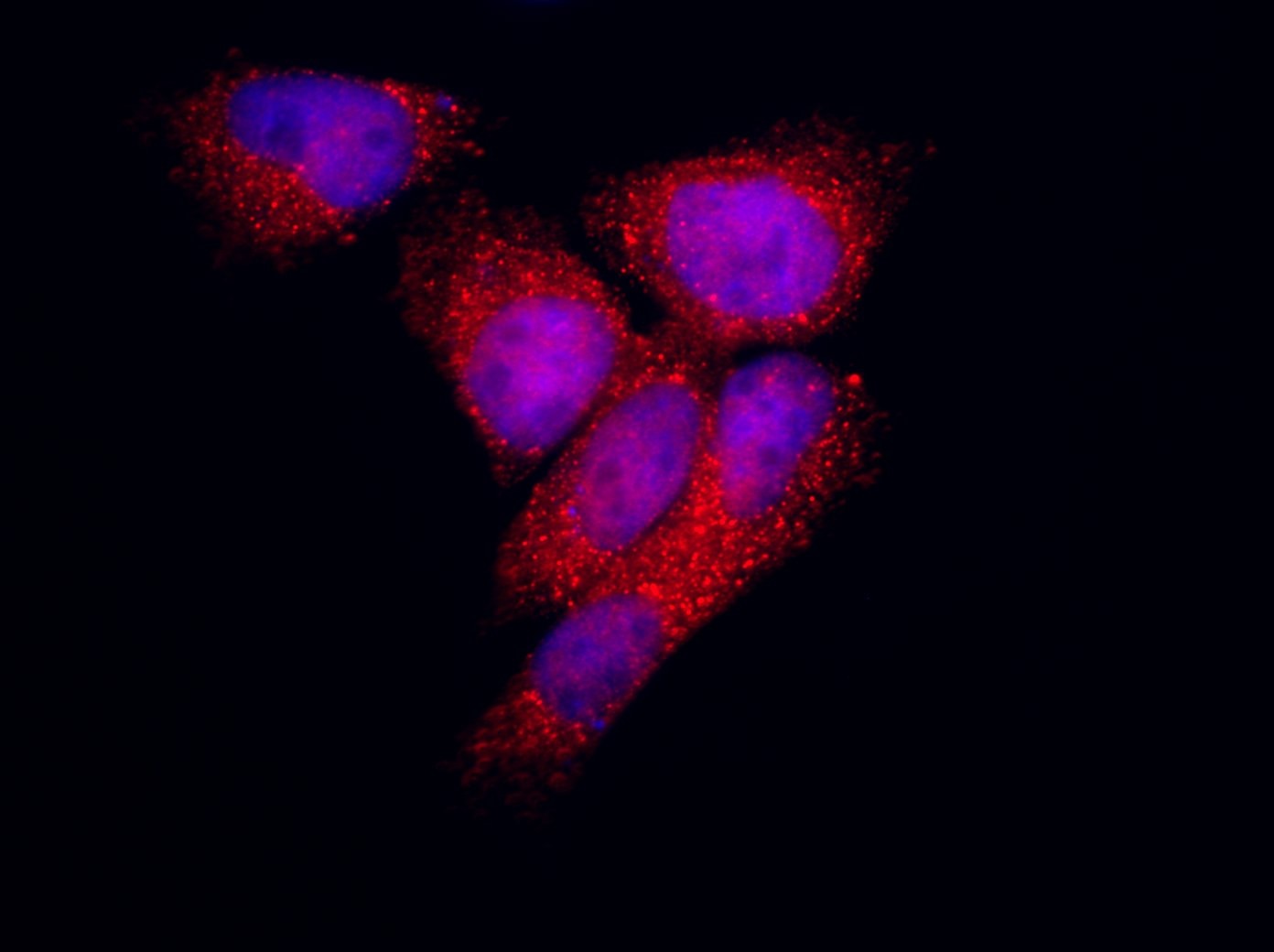 |
